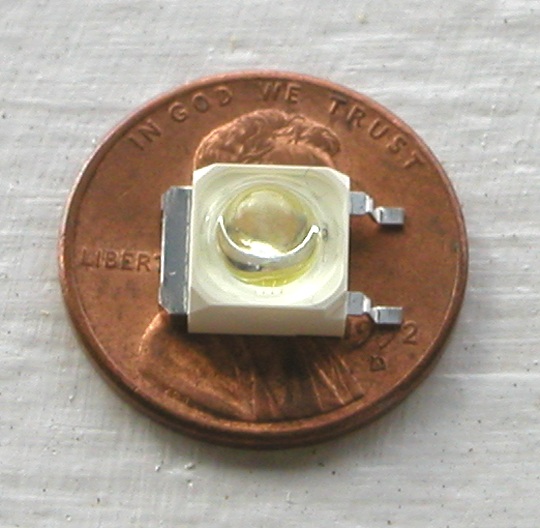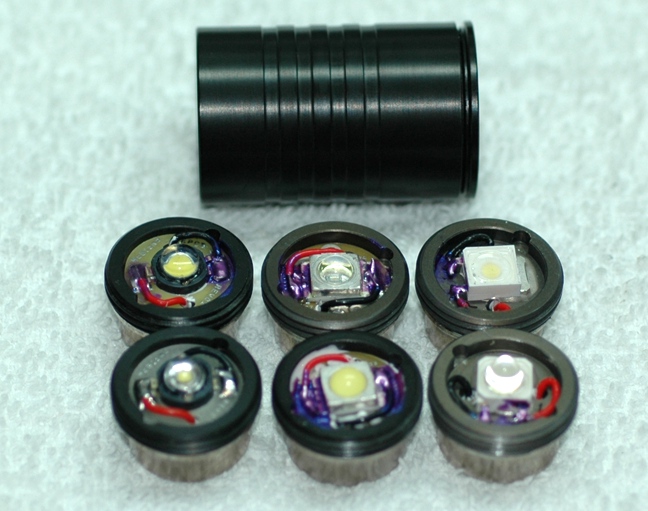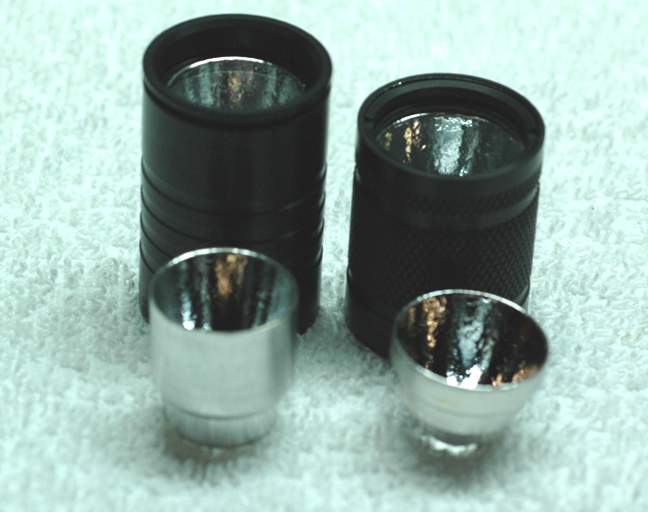The Jupiter has been in the works for a few years now. Initially known as the 2 watt, here is a shot of a "sample" I put in a McLux host (current host, at the time!)
In the crappy photo below, the two LE's on the right are Nichia Jupiter's. The one at top is the flood version and the one at bottom has a lens to provide a 30 degree 1/2 theta viewing angle (as I recall)
The LE's in the middle are Cree 7090 LED's (UV above and white below)
From my rudimentary experimentation, the Cree 7090 and Nichia Jupiter flood will likely work with the same optic allignment and configuration. The image source location is very close to the sink plane and these LED's need to be mounted well forward of where you would mount a Luxeon (for focal allignment). Optic packages for the Luxeon are not suited without significant modification for application with the Cree and Jupiter, in my humble estimation.
Because of the image source location, both the Cree and Jupiter lend themselves to use with reflectors of short focal length, relative to the Luxeons. This means you can use a relatively deep and small diameter reflector and produce a concentrated flood type beam. With reflectors, you have a greater selection of focal lengths to choose from than you do with the Luxeon.
The Proton prototype I saw at SHOT was a good example of an optic package (reflector) that worked well with the Jupiter but it would not have worked with a Luxeon.
I have a new reflector and Aleph 19 in the works that were designed specifically with the Cree UV in mind. They work well with the Jupiter and I am looking forward to getting some Jupiters! This A19 will not be a popular package for most because it is targeted for flood applications and not throw.
What the heck, these images just get worse (new camera /ubbthreads/images/graemlins/blush.gif ) but below is a poor shot of the A19 next to an Aleph 20 with both reflectors in all their blurred glory. The 19 mm reflector is not only 1 mm smaller in diameter but it is also 5.4 mm deeper! I believe you can se that this 19 mm reflector could be chopped and shortened and you could go pretty small and yet still be re directing much of the light.
I guess if I were to get to the point, I would say that the Jupiter will be lending itself very well to small flood type flashlights as well as larger more concentrated beam packages. Some of us have been waiting a long time for the Jupiter and unfortunately the wait continues. Perhaps the wait will be worth it! /ubbthreads/images/graemlins/thinking.gif /ubbthreads/images/graemlins/smile.gif




